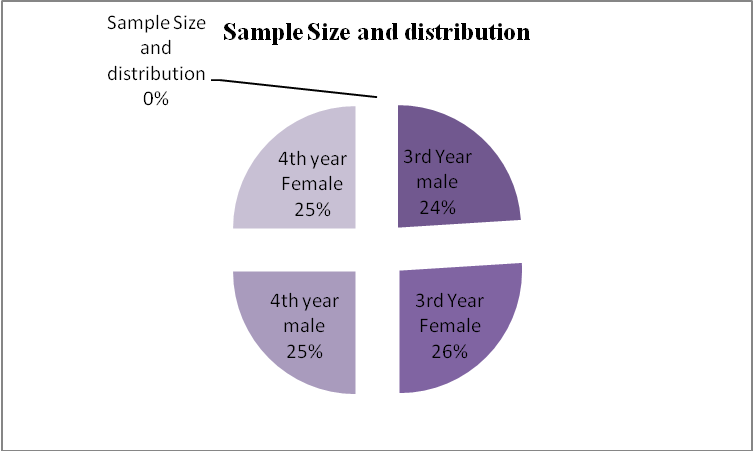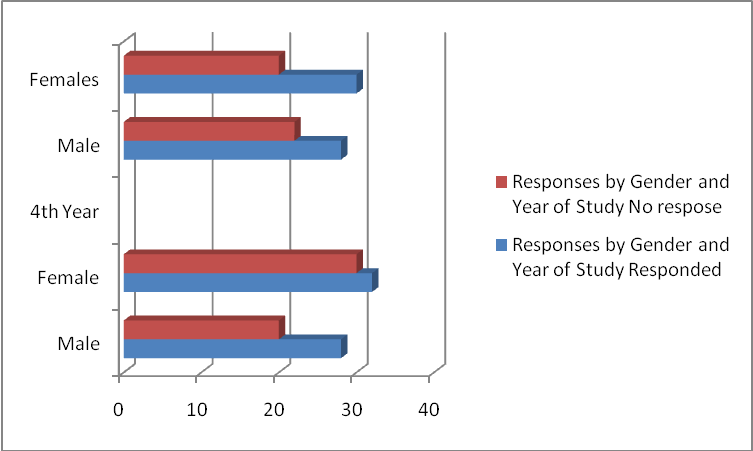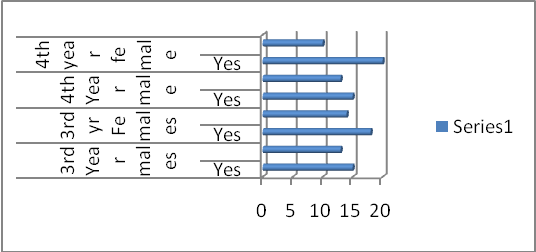Introduction
Classroom interactions have been a fascinating study for many psychologist and sociologists alike. The issue and question that come to mind is that of the role of gender in the interaction. This applies to both instructors’ and students’ gender. Ideally, there should be an equal chance at interacting among all the students and tutors in a University setting. However, too many studies have revealed that this is hardy the case. It is very important to point upfront that these same studies have revealed that this kind of experience is often very subtle (Teaching Resource Center, 2007).
To a large extent, the lectures have been found to be ignorant of their biases in dealing with their male or female students. The gender roles and expectations are sometimes too deeply integrated that the instructors are amazed to even realize they have them. At the same time, the gender roles play out among the students as well (Sadker, 2002). Interactions in a class room situation entails factors such as the course content, the multi-cultural issues in any classroom and therefore the way students are grouped for learning. In addition, the lecturer’s knowledge of the diverse background experiences of the students is critical. His or her decisions, remarks, and behaviors become the key to the kind of interactions experienced in the classroom (Tannen, 2001).
It is because of this complexity experienced in analysis of this aspect that this observation seeks to contribute to the unfolding debate. It seeks to consider whether male and female instructors relate differently to their classes. Further, it seeks the students’ and instructors responses based on gender dynamics in the classroom.
Methodology
In social research several methods or a combination of them can be employed to arrive at the desired answer. Representative classes from each faculty and college were randomly selected and then purposive sampling employed to arrive at the sampling unit. The aim of the selective sampling was to ensure that only classes who had both male and female instructors as well as those with male and female students were selected for this exercise. At the same time, preference was given to classes which had an almost equal number of males as were females. In the event that this was not possible, the alternative was to administer the questionnaires to those in classes in which the minority gender was not less than one third. The assumption was that the number of a particular gender will also create a dynamic in the interactions. To avoid any bias based on this, the selective or purposive sampling was utilized (Hyde, 2005).
To answer the overarching question regarding gender roles and classroom dynamics, an observation was instigated with the view to understanding the ethnographic behavior of both teachers and learners with regard to interactions during learning. Semi-structured questionnaires were given to students and instructors. The questionnaires were distributed at the beginning of the semester and students were encouraged to make their observations throughout the training sessions to capture all aspects of the interactions with the instructors. The targeted target was at least a 55% response which was above the required rate of response (Erica, Heidi, & Stephen, 2007). This was to safeguard against failure to draw valid conclusions due to low response. The resulting data was subject to data analysis using excel spread sheet and represented as descriptive statistic with graphs to illustrate the nature of responses.
Findings and Analysis
Classroom-interactions are very unique experiences. Even given the same instructor and same students, the interaction can be markedly different. Generally, the interactions vary from time to time and it can never be predicted with precision. Fundamentally, students and instructors who come to the university normally do so against a background of earlier schooling experience which shapes their choices when it comes to interacting with others (Bennett, 1982). Given that this earlier interaction goes beyond the scope of this research, the responses were limited to the last two classes with the aim to limit any influence of prior biases among the students. The assumption was that after the last two years at the University, the students have adopted to the classroom dynamic and culture at the university. They can therefore interact with minimal influence from their high school day experiences.
The percentage response was above 55.8% which was a number agreeable for results to be valid. The pie chart below shows the sample size and distribution per year of study and by gender. More graphs are given in the appendix.

In response to the question, do male and female instructors relate differently to their classes? Our observation was very revealing and enlightening. The key variables in this question were: How do male and female instructors approach their students based on gender? Are they likely to ask more questions, demand more responses, expect quicker and competent from one gender than the other based on their own gender orientation? Our observation and the responses, reveal that at the surface both teachers and students are unaware of any such prejudice in conducting their day today learning activities. On further probing and observation though, a pattern is revealed in which the following issues come out more clearly. First, in terms of attention devoted to male and female students, there was a discrepancy.
The overall tendency was that male students receive much more attention from their instructors than did their female counterparts. This observation was on both male and female instructors. There was a general emphasis on the instructors to ask more questions directed to the males than to the females. In responses to the questions asked, there was a tendency by instructors to follow through with the male students who were on the wrong path and offer early positive feedback that reinforced their confidence and gave them the impetus to arrive at the correct response. On the other hand, it was observed that the instructors were not as patient with the female students who attempted to answer the questions asked. More often than not, they diverted their attention and the questions to the male students rather than wait to guide the female students to the desired answer.
In response to the question; do students respond differently to male versus female instructors? The respondents all expressed the fact that there is normally a hidden biased expectation when they first meet a particular tutor based on their gender. The male students for example, always viewed female instructors as mean and at times condescending. However, this perception changes depending on the atmosphere the instructor cultivates with his or her class over the learning period. On the other hand male instructors were viewed by both male and female students as being more businesslike and as a result, were unlikely to entertain any misconduct during the class sessions (Rodriguez, 2002).
In response to the question; are the male and female students given same kind of attention by the instructors irrespective of the instructors’ gender? The male and female instructors both concurred that they generally found themselves giving more attention to the most responsive students. Unfortunately, these more assertive students have predominantly been males as compared to female. In this regard the study found the male and female instructors giving biased attention to the different gender albeit, unconsciously (Ravel & Webber, 2012, p. 153).
Lastly, to establish how praise and criticism was distributed to male and female students by male and female instructors respectively, the answers were most liberating. The distribution of praise and criticism was differently offered by the male and female teachers. Generally, the female instructors were found to give more praises compared to their male counterparts who were seen to offer most critical feedback. In terms of the distribution of praise and criticism, this study established that the male and female students received praise and criticism but for different reasons. For example, the male students were praised more for competent answers while the females were praised more for good behavior.
Discussion
Generally, the gender of the instructors is a key factor that determines the nature and extent of interaction (Sadker, Sadker, & Bauchner, 1984). Even though the female student has made remarkable progress regarding enrollment to universities, the expectations of the society as embraced in the course content and how the content is delivered in class has a role to play in shaping out the interactions between students and their instructors.
This work reveals that there is a tendency to give much attention to the male than to female student in a class situation. This was corroborated by the kind and frequency of answers expected of male students as opposed to their female colleagues. This shows that even with the best intentions if the instructor fails to constantly evaluate his or her teaching experiences, they may contribute much to the discrepancy in treatment of their students based on their gender. For this reason, the instructor ought to deliberately choose a mode of presentation that allows for an inclusive participation of the students in his or her class. This may be achieved by: Seeking out the female students to give their responses, giving immediate feedback that reinforces their confidence and hence their participation. The instructors must also be on the lookout against the dominating students who could easily take all the time and respond to all the questions without allowing others to do the same (Teaching Resource Center, 2007).
It was also interesting to note that the students have far reaching perceptions regarding the nature of interactions they expected from their instructors based on their gender. This perception almost fits any tutor into a bracket and it depends on the instructor’s ingenuity during the course of the interaction to either dispel or reinforce this stereotype. This revelation leaves the success of the nature of students’ and instructors’ interactions purely to the capability of the instructor. This agrees with a study by Parker-Price and Claxton (1996) about motivation that suggested that, it was solely in the instructor’s ability to capture and motivate the students in a class situation rather than to focus on other external factors that affect students’ responses. Initially, my expectation was that the students had the upper hand in determining the nature of interaction in a classroom situation. This perception was however dispelled by this work.
The other interesting aspect of this research was the revelation that the tutors often give more attention to the attention seeking or the more assertive students. I imagined that they would be interested in paying more attention to the visually weak or very elusive students. It becomes even more interesting that this unintentional response puts the instructors at a place where their attention is diverted to a particular gender of students (Wilkinson & Marrett, 1985).
Finally, the revelation about how praise and criticism are awarded is very important for enhancing better interaction in a classroom situation. The best way to motivate students is through the kind of behaviors and feedback that the instructors give to their students. It is for this reason that the instructors must strive to give balanced feedback (criticism and praise) across both gender (Ravel & Webber, 2012).
Conclusion
This research has shown that there are a number of issues that affect the classroom interaction in the university. Based on responses and observations from the 200third and fourth year students at the university, the gender roles and expectations of the students and instructors determine to a large extent the kind of dynamics that go on in a given classroom. It shows that the instructors devote more attention to most assertive students and less to the less assertive ones. Interestingly, the study reveals that the male students tend to be more assertive and domineering and hence end up as the recipients of much attention than their female counterparts.
Second, the students respond differently to their instructors based on their gender. This was fond to be particularly true at the beginning of the interaction. However the actual perception of the interaction is revealed through the time spent during the learning hours. The initial perception is either discarded or reinforced at this stage. The students’ response to their instructors is therefore determined by the gender of the instructor. With regard to distribution of praise and criticism, the study revealed that the keen determinant was the gender. This was same for teachers as well as the students. Most male instructors were found to give more critical feedback and less praise compared to their female colleagues. Furthermore, the male students were the major recipients of praise where competency questions were the concern. The females on the contrary, were major recipients of praise where decency and good behavior were the focus however much such behavior was irrelevant to the subject at hand.
There were some limitations however to this study. First, the assumption that there must be dynamics depending on the size of a class and the gender fractions resulted in some classes being left out of the sampling exercise. Second, the subject was most sensitive and required a series of observations to validate our finding. Last, the dynamics in the early University classes were excluded from this study while they may have a bearing on the current class dynamics. In future research, it may be important to classify or categorize the response group in terms of size and then study the interactions in the first two years of the university and correlate with the interactions in the last two years of the university education.
References
Bennett, S.K. (1982). Student perceptions of and expectations for male and female instructors. Journal of Educational Psychology, 74, 170-179.
Erica, A.W, Heidi L.L, & Stephen, E.D. (2007).Gender differences in learning style preferences among undergraduate physiology students. AdvPhysiolEduc, 31, 153–157.
Hyde, J. (2005). The gender similarities hypothesis. American Psychologist, 60(6), 581- 59.
Parker-Price, S., & Claxton, A. (1996). Teacher’s Perceptions of Gender Differences in Students. Paper presented at the Annual Convention of the National Association of School Psychologists, Atlanta, GA.
Ravel, B., & Webber, M. (2012). Exploring Sociology: A Canadian Perspective (2nd ed.). Toronto, Ontario: Pearson Education Canada.
Rodriguez, N., (2002). Gender Differences in Disciplinary Approaches. Web.
Sadker, D. (2002). An educator’s primer on the gender wars. Phi Delta Kappan, 84(3), 235-240.
Sadker, M., Sadker, D., & Bauchner, J. (1984). Teacher Reactions to Classroom Responses of Male and Female Students. Washington, DC: National Institute of Education.
Tannen, D. (2001). You just don’t understand: Men and women in conversation. New York: Quill.
Teaching Resource Centre. (2007). Teaching a diverse student body: practical strategies for enhancing our students’ learning. Web.
Wilkinson, L., & Marrett, C. (Eds.). (1985). Gender influences in classroom interaction. Orlando, FL: Academic Press.
Appendix

